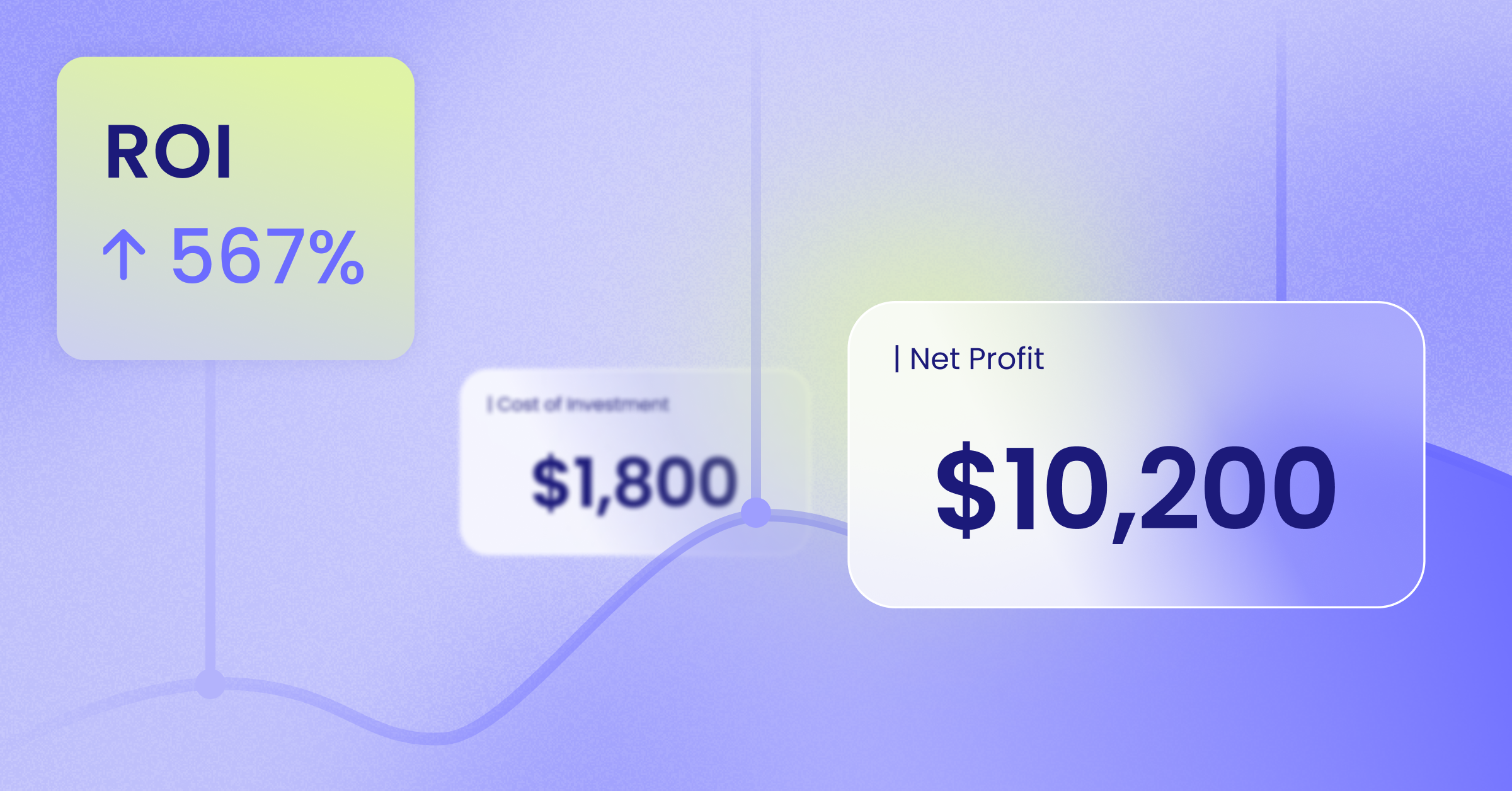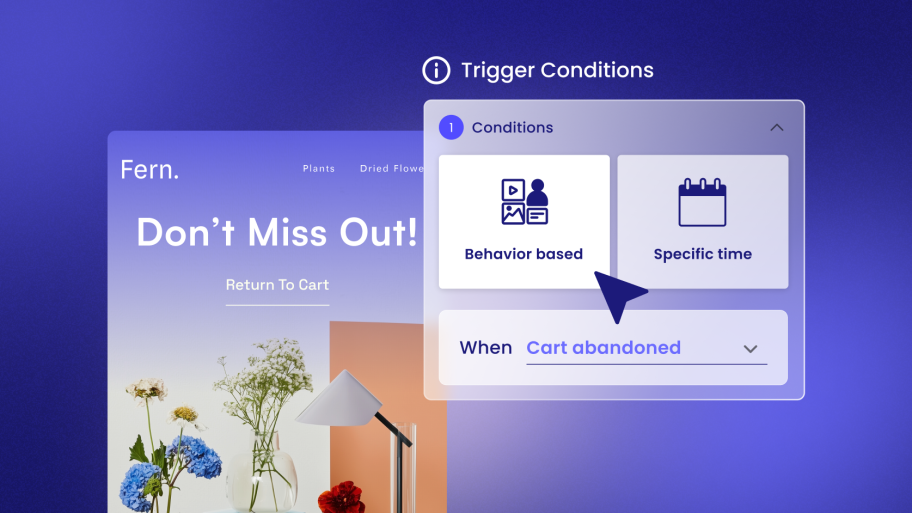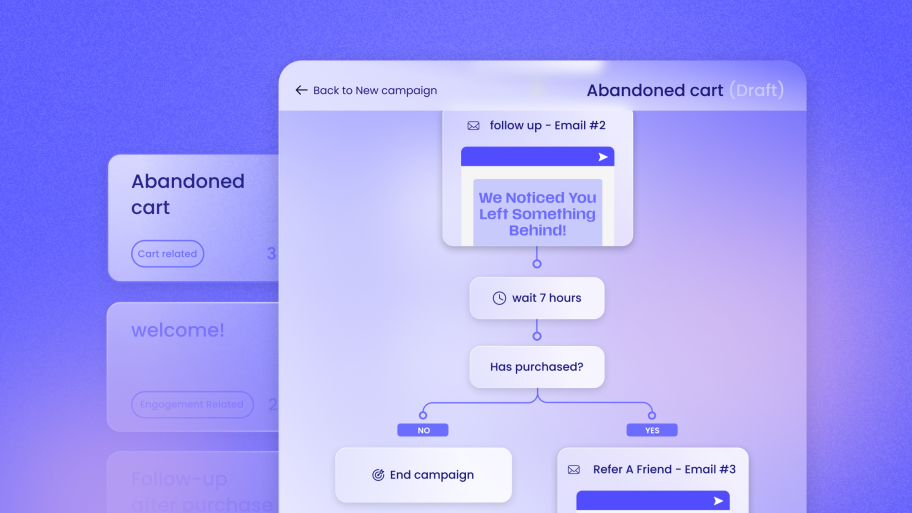This guide will walk you through exactly what ROI is, why it’s so important, and how you can calculate it for your various eCommerce efforts.
What is Return on Investment (ROI)?
At its heart, ROI is a simple concept. It’s a performance measure used to evaluate the efficiency or profitability of an investment. In other words, it tells you how much profit you made from an investment compared to how much it cost you. It’s a straightforward way to see if your efforts are paying off in real dollars.
A Simple Definition of ROI
Think of it like this: you put money into something, and you want to know how much more money you got back. ROI answers that question with a clear percentage. A positive ROI means you’re making money, while a negative ROI means you’re losing money. It’s one of the most fundamental financial metrics for any business because it cuts through the noise and gets right to the point of profitability.
Why ROI Matters for Your Business (and Your Clients)
Understanding ROI isn’t just an accounting exercise; it’s a strategic tool.
For WooCommerce store owners, calculating ROI is essential for smart budgeting. It helps you:
- Identify what’s working. By comparing the ROI of different marketing channels, you can see which ones are actually driving profitable growth. Justify expenses. Should you invest in that new premium plugin or email marketing service? Calculating the potential ROI helps you make an informed decision rather than a gut feeling.
- Optimize your spending. When you know your ROI, you can double down on high-performing strategies and pull back from those that aren’t delivering, making every dollar in your budget work harder.
For web creators and agencies, ROI is your secret weapon for proving value and building long-term client relationships. When you can show a client that the website you built or the marketing campaign you ran generated a significant return, you transform your role from a simple service provider to an invaluable growth partner. This allows you to:
- Demonstrate the value of your work. Instead of just delivering a beautiful website, you can deliver tangible business results and the data to back it up.
- Justify your pricing. Clients are more willing to invest in your services when they see a clear path to profitability.
- Unlock recurring revenue. By offering ongoing services like marketing management and ROI reporting, you can move beyond one-off projects and build a more stable, predictable income stream.
The Basic ROI Formula
The formula for calculating ROI is surprisingly simple. It gives you a percentage that represents the investment’s profitability.
The formula is:
ROI=(Cost of InvestmentNet Profit)×100
Let’s break down the two main components:
- Cost of Investment: This is the total amount of money you spent on the project or initiative. It’s everything you had to pay to get it off the ground.
- Net Profit: This is the money you made from the investment after you subtract the original cost. You can calculate it with its own simple formula:
Net Profit = Final Value of Investment (or Revenue) – Cost of Investment
Let’s use a quick, non-eCommerce example. Imagine you buy a rare trading card for $200 (your Cost of Investment). A year later, you sell it for $300 (your Final Value).
- Net Profit: $300 – $200 = $100
- ROI Calculation: ($100 / $200) * 100 = 50%
Your ROI is 50%. This means you earned back your initial $200, plus an additional 50% of that amount in profit.
How to Calculate ROI: A Step-by-Step Guide for eCommerce
Now, let’s apply this to a real-world eCommerce scenario. Calculating ROI for a marketing campaign or a new website feature follows the same principles, but the numbers you need to gather are a bit more complex.
Step 1: Identify Your Investment Costs
The first step is to add up every single cost associated with your investment. It’s easy to overlook things here, so be thorough. Costs can generally be split into two categories: direct and indirect.
Here are some common investment costs for a WooCommerce store:
- Marketing & Advertising Spend: This is the most obvious one. It includes your budget for Google Ads, Facebook ads, or payments to influencers.
- Software & Tools: The monthly or annual subscription fees for your marketing tools, analytics platforms, or premium plugins.
- Content Creation: The cost of hiring a photographer for product shots, a copywriter for blog posts, or purchasing stock images.
- Labor Costs: The time you or your team spend working on the project. If you’re paying an employee or a freelancer, their wages for the time spent on the project are a direct cost.
- Cost of Goods Sold (COGS): This is crucial and often forgotten. If your marketing campaign sells 100 widgets, you must account for the cost to produce or acquire those 100 widgets.
Being meticulous in this stage is key to getting an accurate ROI figure.
Step 2: Measure Your Return (Net Profit)
This step is all about figuring out how much profit your investment generated. It starts with tracking the revenue that can be directly attributed to your efforts.
Attribution is the process of connecting a sale to a specific marketing touchpoint. How do you know a customer bought something because they clicked on your email campaign and not because they saw a Facebook ad a week ago? This can be tricky, but modern analytics tools make it much easier. You can use things like:
- UTM Parameters: These are small snippets of code added to your URLs that tell analytics tools where a visitor came from.
- Promo Codes: Creating unique discount codes for different campaigns is a simple way to track sales from each one.
- Platform Analytics: Most marketing platforms have built-in dashboards that track sales and revenue generated from your campaigns.
Once you have your total revenue, you need to calculate your Net Profit. Remember, revenue is not profit. To find your net profit, you subtract all your costs from the revenue.
Net Profit = Campaign Revenue – COGS – Investment Costs
Step 3: Putting It All Together – A Practical Example
Let’s walk through a scenario. Imagine you run a WooCommerce store selling custom-printed t-shirts. You decide to launch an email marketing campaign to promote a new design.
Step 1: Calculate Investment Costs
- You use an email marketing tool that costs $30 per month.
- You hire a freelance designer to create a beautiful email template for $150.
- Your total Cost of Investment is $30 + $150 = $180.
Step 2: Measure the Return
- You send the email campaign to your subscriber list. Using your email platform’s analytics, you track that the campaign directly generated $2,000 in sales.
- The t-shirts you sold cost you $800 to produce (this is your COGS).
- Your Gross Profit from the sales is $2,000 (Revenue) – $800 (COGS) = $1,200.
- Now, calculate your Net Profit by subtracting the investment cost: $1,200 (Gross Profit) – $180 (Investment Cost) = $1,020.
Step 3: Calculate the ROI
- Now you have the two numbers you need:
- Net Profit: $1,020
- Cost of Investment: $180
- Let’s plug them into the formula:
ROI=($180$1,020)×100=567%
Your campaign’s ROI is 567%. What does this mean in plain English? For every $1 you invested in this email campaign, you generated $5.67 in pure profit. That’s a fantastic return, and it clearly shows that this was a worthwhile investment.
Beyond the Basic Formula: Nuances of ROI
The basic ROI formula is a great starting point, but in the real world of web development and digital marketing, things can get a bit more complex. Not all returns are immediate, and not all of them can be measured in dollars and cents.
The Challenge of Time
Some investments, like a paid ad campaign, generate results almost instantly. Others, like Search Engine Optimization (SEO) or content marketing, are a long game. You might invest in creating blog content for six months before you see a significant increase in organic traffic and sales.
If you calculate the ROI on your SEO efforts after just one month, it will likely be negative and look like a failure. This is where you need to consider the time horizon of your investment. For long-term strategies, it’s better to measure ROI over a longer period, like a year. You might even consider calculating an Annualized ROI, which shows you what your return would be over a full year, making it easier to compare long-term and short-term investments.
Measuring Non-Financial Returns (The “Soft” Metrics)
Not every goal of an investment is to generate immediate profit. Sometimes, you’re investing in building your brand or growing your audience. These “soft” returns are incredibly valuable, even if they don’t have a direct dollar value attached.
Some examples of non-financial returns include:
- Brand Awareness: An increase in website traffic, social media followers, or brand mentions.
- Customer Engagement: Higher email open rates, more likes and comments on your social posts, or more time spent on your website.
- Lead Generation: A larger email or SMS subscriber list, which represents future potential sales.
While you can’t plug “500 new Instagram followers” into the ROI formula, these metrics are often leading indicators of future financial success. It’s important to track them alongside your financial ROI to get a complete picture of an investment’s performance.
Calculating ROI for Different Marketing Channels
Different marketing channels require slightly different approaches to measuring ROI. Let’s look at a few common ones for eCommerce stores.
Email & SMS Marketing
Email and SMS marketing consistently rank among the highest ROI channels available. That’s because you’re communicating with an audience that has already opted in and wants to hear from you. The key to maximizing ROI here is using a platform that makes it easy to send, automate, and, most importantly, track your results.
This is where a deeply integrated tool becomes a major advantage. For web creators and store owners using WordPress, a solution like Send by Elementor is designed to simplify this process. Because it’s a WordPress-native toolkit, it eliminates the common headaches of syncing data between your store and an external marketing platform.

The real-time analytics are built directly into your WordPress dashboard, providing a clear line of sight between your campaigns and the revenue they generate. This directly solves one of the biggest challenges in calculating ROI: accurate attribution. You can clearly see which email or SMS flow led to a sale, making it easy to prove the value of your marketing efforts to yourself or your clients. Furthermore, features like pre-built automation flows for abandoned carts or welcome series work in the background to consistently generate revenue, making their ROI both high and predictable.
Paid Advertising
For paid advertising on platforms like Google or Facebook, you’ll often hear the term Return on Ad Spend (ROAS). ROAS is similar to ROI, but there’s a key difference:
- ROAS measures gross revenue generated for every dollar spent on advertising. ROAS = Revenue / Ad Spend.
- ROI measures net profit generated from the investment, accounting for all costs (including ad spend and COGS).
ROAS is a useful metric for quickly gauging the performance of an ad campaign, but ROI gives you the true picture of profitability. A campaign might have a high ROAS but a low or even negative ROI if your profit margins are thin. Some platforms, like AdRoll, help manage and track these campaigns across various channels.
SEO & Content Marketing
As mentioned earlier, calculating the ROI of SEO is challenging due to its long-term nature. Instead of looking for a direct, immediate return, it’s better to track progress through key performance indicators (KPIs) like:
- Growth in organic search traffic.
- Improvements in keyword rankings for important commercial terms.
- Number of leads or sales generated from organic traffic.
You can then assign a value to that traffic to estimate its financial return over time. Tools like Moz offer suites to help businesses track and improve their search visibility.
Social Media Marketing
Attributing direct sales to social media can be difficult, though the rise of social commerce features is making it easier. The Facebook & Instagram app, for instance, allows you to sync your product catalog and create shoppable posts, which helps connect social activity directly to sales. For social media, it’s often best to use a “blended” approach, tracking both direct sales and those valuable “soft” metrics like engagement, follower growth, and referral traffic to your website.
What is a “Good” ROI? Setting Realistic Benchmarks
So, you’ve calculated your ROI and you have a number. Is it good? The honest answer is: it depends.
A “good” ROI varies dramatically based on your industry, the marketing channel you’re using, and your overall business goals. An ROI of 20% might be fantastic for a low-risk investment, while a high-risk venture might need to see an ROI of several hundred percent to be considered a success.
However, in digital marketing, there are some general rules of thumb. Many businesses aim for an ROI of around 400% (a 5:1 ratio), meaning they make $5 for every $1 they spend. For email marketing, the average ROI can be much higher.
Here is a table with some hypothetical industry averages to give you a general idea. Remember, these are not universal truths, but they can provide some helpful context.
| Marketing Channel | Hypothetical Average ROI | Notes |
| Email Marketing | 1,000% – 4,000% | Tends to be very high due to low cost and a warm audience. |
| PPC Advertising | 100% – 300% | Can be effective but costs can add up quickly. |
| SEO | 500%+ (over time) | Requires patience, but the long-term returns can be massive. |
| Content Marketing | 300%+ (over time) | Similar to SEO, this is a long-term play that builds authority. |
| Social Media | 100% – 400% | Varies greatly by platform and strategy. |
The most important benchmark is your own. Start tracking the ROI for all your initiatives. Over time, you’ll develop a baseline for your own business, and you’ll be able to quickly spot which new strategies are performing above or below your average.
Common Pitfalls and How to Avoid Them
Calculating ROI seems straightforward, but there are a few common mistakes that can lead to inaccurate results and poor decisions. Here’s what to watch out for.
Forgetting Indirect Costs
This is the most common mistake. It’s easy to count your ad spend, but what about the salary of the employee who managed the campaign? Or a portion of your office rent? Or the subscription cost for the software you used? Forgetting to include these “hidden” costs will artificially inflate your ROI and make an unprofitable campaign look like a winner. Always be thorough when listing your costs.
Poor Attribution and Tracking
If you can’t accurately track where your sales are coming from, you can’t calculate a meaningful ROI. It’s crucial to set up your analytics and tracking systems before you launch a campaign. This is another area where an all-in-one, native solution can save you from major headaches. When your marketing tools are separate from your eCommerce platform, you often run into data syncing errors and plugin conflicts that break your tracking. A WordPress-native tool like Send by Elementor avoids this by keeping everything within the same ecosystem, ensuring your data is clean and reliable.
Focusing Only on Short-Term Gains
Don’t fall into the trap of abandoning long-term strategies like SEO just because they don’t produce a high ROI in the first few months. A balanced marketing strategy includes both short-term tactics to drive immediate sales and long-term investments to build a sustainable foundation for future growth.
Ignoring Customer Lifetime Value (CLV)
Sometimes, an investment’s true return isn’t just in the first sale. A campaign might have a modest initial ROI, but if it acquires customers who become loyal, repeat buyers, its true value is much higher. Customer Lifetime Value (CLV) is a metric that predicts the total profit your business will make from a single customer over their entire relationship with you.
Marketing efforts that focus on retention, like automated email and SMS flows, have a massive impact on CLV. A welcome series, for example, might not just drive a first purchase; it sets the stage for a long and profitable customer relationship. When you factor in CLV, the ROI of your customer retention strategies often skyrockets.
How Web Creators Can Leverage ROI to Grow Their Business
If you’re a web creator or agency, understanding and reporting on ROI is your ticket to elevating your business. It’s how you shift from being a task-doer to a strategic partner.
Moving from Project-Based Work to Recurring Revenue
Instead of just building a site and handing it over, you can offer ongoing marketing and management services. This creates a recurring revenue stream for your business and provides continuous value to your client.
A toolkit like Send by Elementor is designed specifically for this purpose. It empowers you to easily integrate powerful email and SMS marketing services into your client offerings. Because it’s built for WordPress and has an intuitive interface, you don’t need to be a marketing guru to manage it effectively for your clients. You can set up automated flows, send campaigns, and generate reports, creating a valuable, ongoing service that clients are happy to pay for.

Building Stronger, Data-Driven Client Relationships
When you lead conversations with data, you build immense trust. Imagine being able to go to your client each month with a clear report that says, “We invested X amount in email marketing this month, and it generated Y amount in profit for your business.” That’s a powerful conversation to have. It proves your worth and solidifies your role as a key part of their growth strategy.
The clear, demonstrable ROI provided by integrated tools makes these conversations easy. You can use the built-in analytics to show exactly how your efforts are contributing to their bottom line, fostering loyalty and leading to longer, more profitable client partnerships.
A Simple Framework for Client ROI Reporting
You can create a simple monthly report for your clients to keep them informed and showcase your value. Here’s a basic template:
- Executive Summary: Start with the highlights. What was the overall ROI for the month? What were the big wins? Keep it brief and to the point.
- Investment Breakdown: Clearly list all the costs for the month. This includes your management fee, software costs, and any ad spend. Transparency is key.
- Performance Metrics: Show the results. This includes the revenue generated, leads captured, website traffic increases, and any other relevant KPIs.
- ROI Calculation: Show your math. Clearly lay out the Net Profit and Cost of Investment, and present the final ROI percentage.
- Analysis & Recommendations: This is where you add your strategic value. What did you learn from this month’s data? What do you recommend doing next month to improve results?
Wrapping Up: Making ROI Work for You
Return on Investment is more than just a formula; it’s a mindset. It’s about thinking critically about every business decision and focusing your resources on the activities that create real, measurable growth. Whether you’re a store owner deciding on a marketing budget or a web creator looking to provide more value to your clients, mastering ROI is a fundamental step toward achieving your goals.
By carefully tracking your costs, accurately measuring your returns, and choosing the right tools to simplify the process, you can move forward with confidence, knowing that every investment you make is a smart one. Integrated, easy-to-use platforms are essential, as they handle the technical complexities of tracking and reporting, freeing you up to focus on what really matters: building a successful business.




